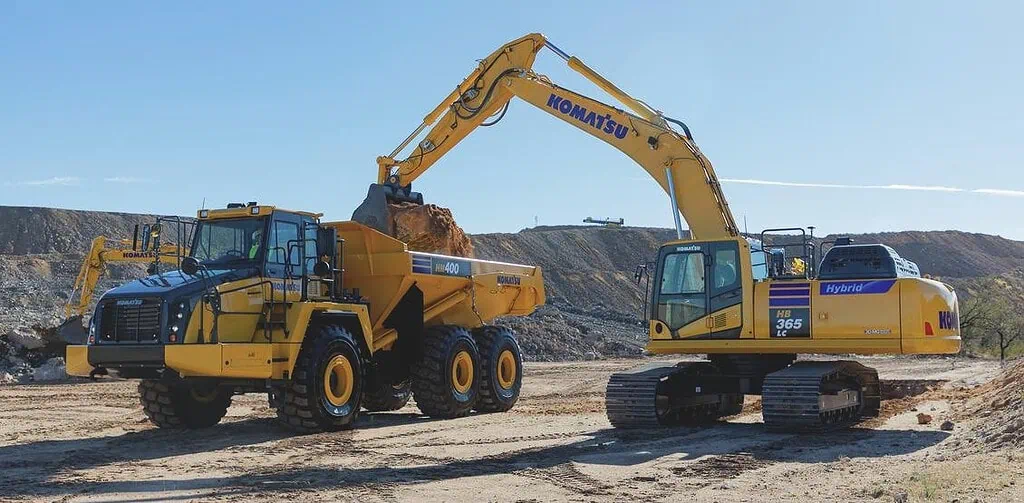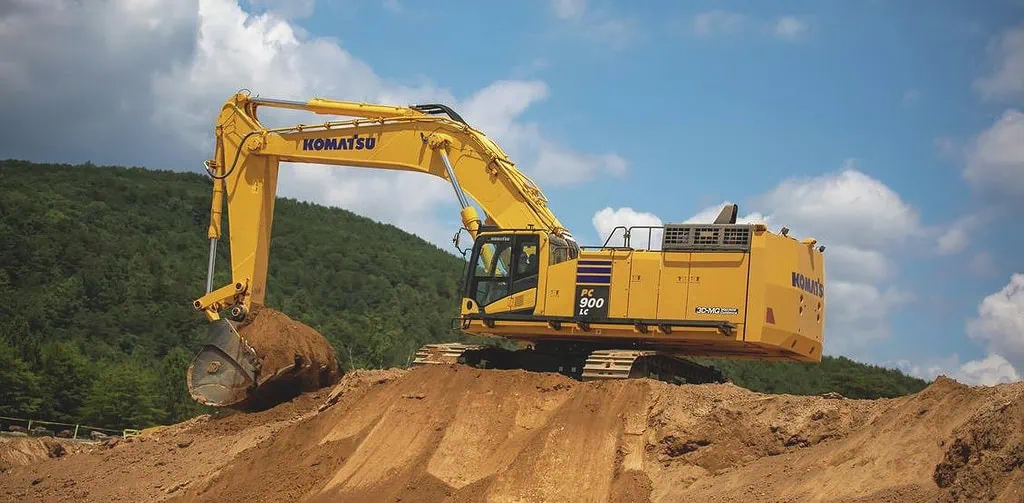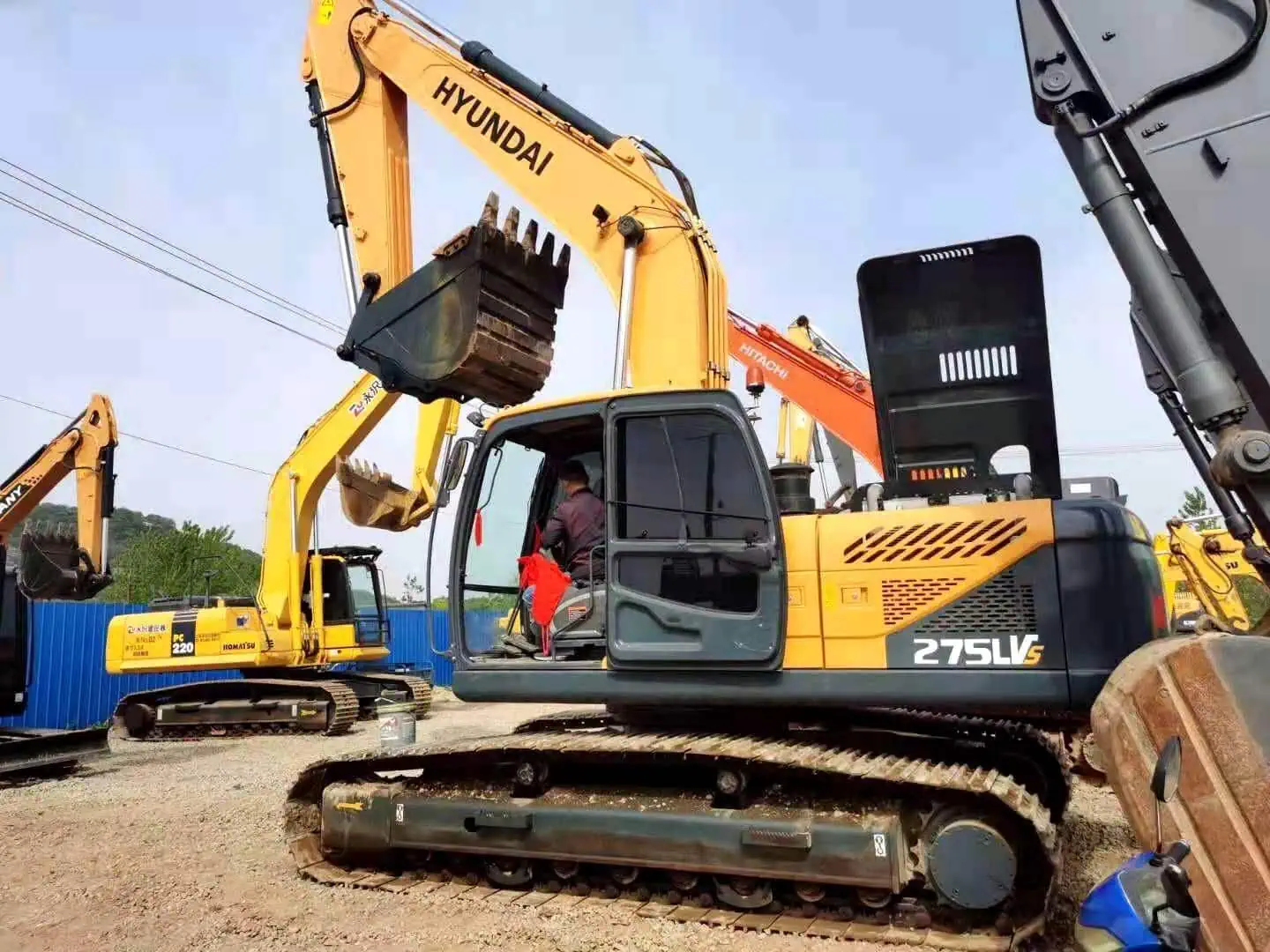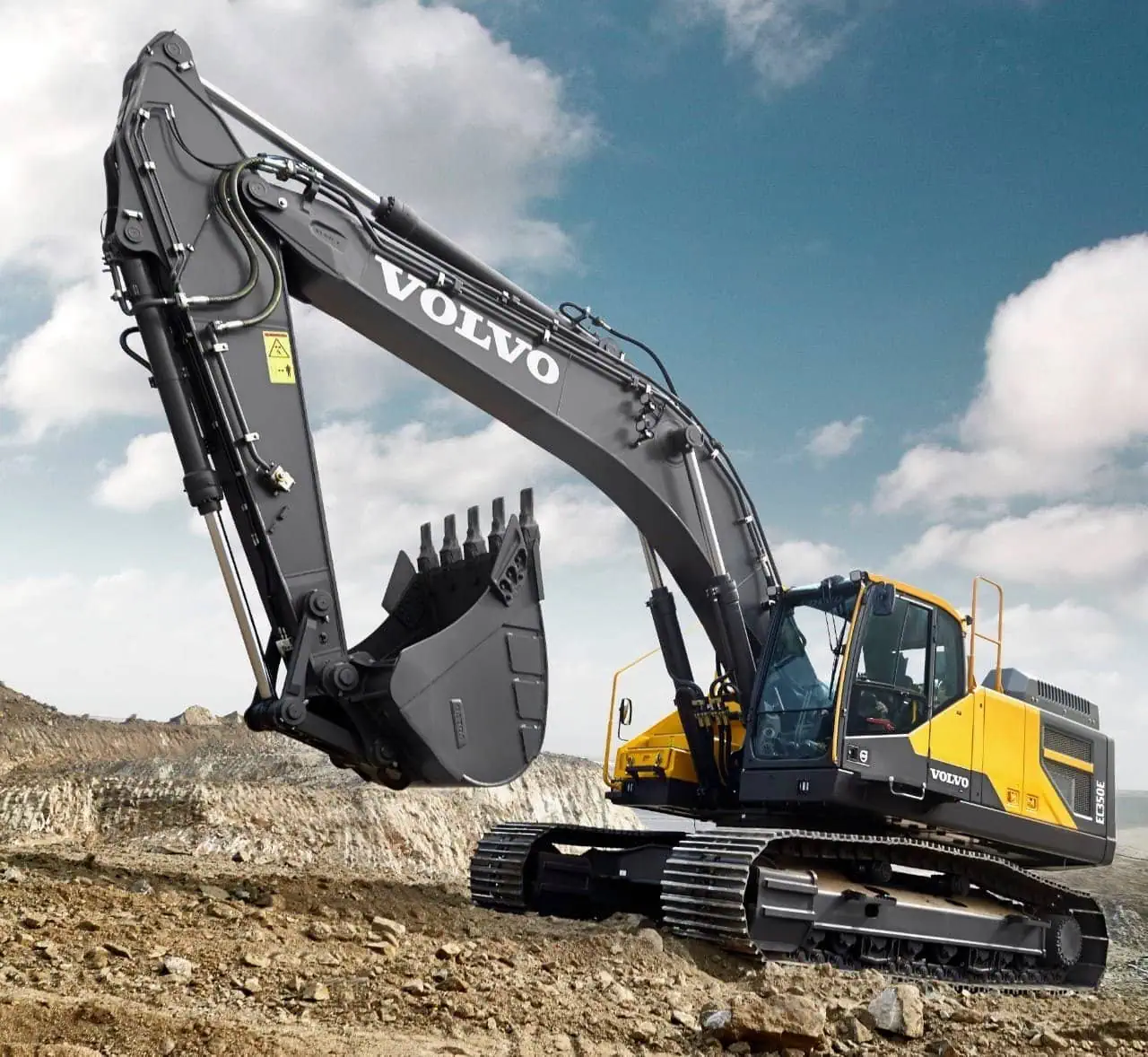Having trouble picking the right Komatsu excavator size for your project? You know the drill. It’s not easy to determine what machine will suit your needs, budget, and performance. But choosing the proper size of Komatsu excavator doesn’t have to be a complex decision. By knowing the basics and the most important things to consider, like your job scope, the site conditions, and what it’s going to cost you, you can confidently make your decision and get the right Komatsu excavator size for your project. The purpose of this guide is to help you through all the steps necessary to buy a Komatsu excavator that will help you with your project and not cost you a fortune.
If you were the one building the deck, you’d want to rent an excavator instead of digging it by hand. But what size of excavator should you choose? Choose the smallest size excavator that gets your job done. It’s that simple. If you choose a size too big, it will be harder to use in tight spaces. But remember, a little baby excavator won’t do much if you need to build a retaining wall next to a lake. These tips should help you rent the right size machine for your project.
Let’s dive deeper into how you can choose the right Komatsu excavator size based on various factors, including machine capabilities and cost considerations.

جدول المحتويات
تبديلWhat Are the Different Komatsu Excavator Sizes Available?
They can range from 3.5-tons to 15 metric tons and are great for various construction, mining, and other heavy industry needs. Understanding the different Komatsu excavator sizes is key before you buy one. The size range is designed for different applications. From small residential projects to large commercial construction or big mining jobs.
Mini Excavators (1.5 to 6 tons)
digging and trenching, landscaping and gardening, construction and demolition, and material handling. Mini excavators can also be useful for utility work, septic and sewer system installation, plumbing and electrical work, tree planting, and much more. In short, if a full-size excavator can do it, a mini excavator can do it, too!
- Landscaping: Digging trenches, planting trees, and creating garden beds.
- Residential Construction: Foundation digging, pool excavations, and site preparation.
- Utility Work: Trenching for pipes and cables in urban or suburban settings.
Medium Excavators (10 to 20 tons)
These machines are perfect for small-to-medium-sized businesses that need to dig holes or otherwise prepare a site. They are most commonly seen in the real estate and construction sectors, where they can deliver significant value without forcing the client to break the bank.
- Trenching and Digging: Excavating large trenches for pipelines, foundations, or drainage.
- معالجة المواد: Moving heavy materials around construction sites.
- Roadwork and Site Preparation: Preparing surfaces for roads or large buildings.
Medium excavators are a popular choice for contractors who need more power than a mini excavator but don’t need the size or expense of a large excavator. They are also often used on urban construction sites where the
extra weight and power can be put to good use without sacrificing too much maneuverability.
Large Excavators (20 tons and above)
Large Komatsu excavators are built for heavy-duty work. These are the models you see when you need to move enormous amounts of earth or where you are trying to operate in a tough environment. Common uses are in mining, large-scale earth moving, and demolition. The largest Komatsu models, like the PC8000, can weigh in at 140,000 pounds, and you will typically see them in situations where the additional power and durability is mission-critical.
Some of the primary applications for large excavators include:
- Mining: Removing large amounts of earth, digging for minerals, and transporting materials.
- Demolition: Taking down large structures, including buildings, bridges, and other infrastructure.
- Heavy Construction: Moving large volumes of material or digging deep trenches for massive construction projects like highways, tunnels, and airports.
Large حفارات are a great piece of equipment when you know you need the heavy lifting power that comes with a bigger machine. Large excavators can pick up and transport much larger loads, and they can take on the more extreme digging conditions.

How Can I Use the Komatsu Excavator Size Comparison Chart to Make the Right Choice?
Using a Komatsu excavator size comparison chart is a tremendous help when you are analyzing which machine will be best for you. The sizing chart will give you all the specs on all the models, so you can quickly compare bucket capacity, operating weight, engine power, and fuel consumption.
Key Factors to Compare:
Bucket capacity: The size of the bucket is important for determining how much material you can move at a time. Larger buckets move more material, so if you are doing a lot of earthwork, civil site work, or material handling, a larger bucket will speed up the work. Smaller buckets are more precise, so if you’re in tighter spaces or need high precision, a smaller bucket is better.
Operating Performance: Larger machines can lift and move heavier loads, but they can’t reach as high as a smaller, lighter machine. Smaller machines are easier to operate in tight areas. The lighter your machine, the more work you can do with it in a given environment over a given period of time. logrusProfitability: Profitability is a matter of using the least expensive, most appropriate machine. Don’t try to use your bigger machine because it is more expensive. However, if there is down time with your lighter, less expensive machine, feel free to use a bigger, heavier, and more expensive machine while the lightweight machine is in the shop. Flexibility and adaptability save you money every time.
Fuel Efficiency: Bigger machines burn more fuel but get more done per hour, reducing the cost of a project. Smaller machines burn less fuel, but it may take longer to complete the job. On small jobs, it could be the other way around since the smaller machine requires less time to idle, move around, and load out work. A bigger machine will require a certain amount of time to idle and do a big job .
Profitability: Being profitable is all about using the least expensive, most appropriate machine. Don’t use your big machine just because it costs you more. Don’t be afraid to utilize your big, heavy, expensive machine when your light, cheap machine is down. The more flexible and adaptable you can be, the more money you make every time.
What Are the Key Benefits of Choosing a Komatsu Mini Excavator for My Project?
Owning a حفارة صغيرة is cheaper. You can dig a big hole with a mini excavator, but it might take you 100 hours longer. However, when your big machine is down, don’t hesitate to use your mini excavator to fill in. When truck loading or utility trenching, a mini may not be the right tool, but look for jobs a mini can do for you because it’s cheaper to run. If you’re tight on inventory and have to take on another big job, it pays to have a mini on hand if something breaks down.
Advantages of Mini Excavators:
الوزن التشغيلي: Big machines are more stable, will pick and carry more, are usually more robust, and will not sink in mud or soft ground as often as smaller machines. Small machines are more mobile and better suited to jobs where the machine must move around more. High-boy trailer jobs (where the machine can travel with the bucket on the stick) almost always involve the use of a smaller machine since these trailers are limited to certain weights per axle.
قوة المحرك: The most important thing to consider about engine power is the type of work you plan to do. If you are working in a septic system, small water or sewer line, or shallow trench job, you won’t need as much power. Still, you’ll need plenty of power if you are doing all types of dirt work (in the trench, truck loading, or forklift, for example) because all that dirt stresses your machine.
براعة: Many mini excavators can accept an array of attachments, such as: augers, breakers, grapples, and more, so you can use the machine for numerous tasks. This means mini excavators are a great option for contractors who need a versatile tool that can handle all of their needs.

When Should I Choose a Larger Komatsu Excavator for Heavy-Duty Tasks?
Larger models are great for heavy lifting, carrying large loads, and digging in adverse conditions. They are designed to work in the tough jobs that demand power and strength.
When to Choose a Large Komatsu Excavator:
Mining and Quarrying: Large-scale applications in quarries or mining operations require an excavator that can handle the sheer bulk of earth and rock being moved and extracted. Large excavators can handle such tasks as digging out materials, removing overburden, and hauling mass amounts of earth and rock with ease.
Demolition: Large-scale demolition requires large excavators that can accommodate the use of heavy equipment and provide a more stable base for tearing down larger structures and buildings. The added size and power of the larger excavator make it ideal for this kind of work.
Heavy demolition: If the work requires breaking up steel and reinforced concrete, these machines offer the muscle and force to take down tough structures while maneuvering amidst the debris.
How Do Komatsu Excavator Sizes Affect the Price List?
Jobs such as building demolition usually require 60 metric tons or more with a long-reach attachment. This may include a building that’s 12 to 19 stories or higher, a bridge, or some other structure requiring the long reach. With a high-reach attachment, it could be a building 15 stories or higher.
How Size Affects Cost:
Construction companies with limited working capital may find that a mini-excavator is the most viable option for them. In addition, they require less maintenance, reducing operating costs and providing the company with more revenue.
Medium Excavators: Medium excavators are the next size up and are also more expensive than the mini’s but add more versatility and performance. They range from a few tens of thousands to over $100,000, depending on the make, model, and attachments or number of customizations. Medium excavators offer a great sweet spot where you need more power than a mini, but you don’t need—and can’t afford—the expense of a large excavator.
Large Excavators: Large excavators are your most expensive property, often from several tens, to several hundred thousand dollars. The price reflects their power and the fact that large machines are built to take a beating, day in, day out. If you have the kind of project that needs that kind of production, the cost is justified. Truthfully, massive amounts of chear horsepower can do a lot of stuff very quickly. If you need a 50-ton machine, there aren’t many options.
When discussing the larger numbers, you are generally just looking at a machine that can work faster and do more work. The bottleneck isn’t always the machine; it’s what you can dig and haul away. If you can live with a 20-ton machine, you’re going to save a lot of money. If you have to have a 50-ton machine, you’ll be wearing a new one out every three to five years, no doubt about it. If you require a machine with that kind of productivity, then the cost is worth it.

What Should I Know About Komatsu Excavator Models and Their Price Range?
When it comes to كوماتسو excavator models, you need to know the price range of the model you are looking at based on the size of the machine. While Komatsu is a brand known to offer high-quality machines that get the job done, prices can vary greatly based on the model, size, and additional features on the machine.
Price Range for Different Komatsu Excavator Models:
Mini Excavators: The price for a Komatsu mini excavator can range from approximately 20,000to20,000ل70,000 depending on the model, age, and features. Newer models with advanced features like enhanced fuel efficiency and upgraded hydraulics can be on the higher end of this range.
Medium Excavators: Medium-sized excavators typically fall in the range of $60,000 to $200,000, depending on their size and the specific needs of the project. These models are more expensive due to their increased power, larger buckets, and additional capabilities for handling various types of earth-moving tasks. The cost may increase with specialized features like a high-flow hydraulic system or additional attachments.
Large Excavators: Large Komatsu excavators can cost anywhere from $150,000 to over $500,000 for the most advanced models. These machines are built for heavy-duty tasks, such as large-scale mining, demolition, and deep excavation. The price for these excavators reflects their immense size, strength, and ability to handle complex operations.
How Do Komatsu Excavator Sizes Impact Performance and Efficiency?
You need to determine whether you want to operate a small, medium, or large excavator and select the right sizes. Whatever size the project requires, Komatsu has an excavator built for you. However, disadvantages come with whatever size you pick. A small excavator can’t do a big excavator’s job, but a big excavator can consume more fuel, cost more to operate, and take up more room to load or move.
Efficiency and Performance by Size:
Mini Excavators: These machines are made for tight spaces and getting in and out of confined areas. Because they are generally smaller, mini excavators will be more fuel efficient than a larger model. Mini excavators will not dig as fast and the bucket sizes will not be as large as mediums or larges, so they are not going to put as many yards (or meters) in the hole as you might with a bigger machine.
Medium Excavators: This category of machines is a compromise between the two. You want to get the best fuel efficiency and best productivity you can for the kind of work you’re doing. A mini-excavator is right for certain sites and a small excavator is perfect for others. If you have enough room to work with a medium-sized machine, it’s the best choice.
Large Excavators: Big machines are made to move a lot more material in a lot less time. They have more power and can move more dirt or lift more weight. However, less fuel efficiency comes with the territory— so you’re going to spend more money buying fuel to run these larger machines. Large machines are more difficult to move down the road and less mobile on a tight job site. You have to plan carefully when you buy a larger machine.

When Should I Consider Upgrading to a Komatsu Excavator with More Power?
If you’ve recently taken on a commercial job or need to complete a larger project on your property, get quotes on your rental rates for the rest of your project. You might find it’s cheaper to rent for an extra week and have a better machine than try to make do with a too small option.
Signs You Should Upgrade:
Increased Project Scale: If you’re moving from a small residential project to a larger construction site, upgrading to a more powerful excavator will help you meet the demands of the job. Larger machines provide the additional power and reach necessary for large-scale operations.
Struggling to Meet Deadlines: If your current excavator is taking longer to complete tasks than initially planned, this could be a sign that you need more power to accelerate progress. A larger, more powerful excavator will allow you to complete tasks more efficiently.
Complex and Deep Excavation: Larger, more complex excavations require a more powerful excavator. It is designed to perform well in difficult conditions like mining, demolition, or deep trenching.
ملخص
Choosing the right Komatsu excavator size for your job is crucial to making sure you have what you need to get the job done. By understanding the difference in sizes, prices, and performance, you can make your best decision. Whether you’re renting a Komatsu mini excavator for a tight spot or a larger machine for heavy-duty work, knowing what the different sizes of Komatsu excavator can do will help you work better and save money. Use the Komatsu excavator size comparison chart. Look at the price lists. Think carefully about your job and what it needs to be successful.For more information or professional advice, feel free to اتصل بنا.










